Good Laboratory Practice (GLP) is a set of guidelines that helps ensure the quality and reliability of pharmaceutical laboratory data. These GLP guidelines are important because they help to prevent errors and they also ensure that data collected during laboratory testing is accurate and consistent.
Understanding GLP guidelines in Pharmaceuticals:
Good Laboratory Practice (GLP) guidelines focus on the processes and conditions for laboratory tests. These guidelines cover the planning, execution, monitoring, recording, archiving, and reporting of tests. Following the principles of GLP helps test facilities plan tests properly and ensures that they have adequate resources to perform them. GLP also facilitates the accurate reporting of test results and enables verification of the validity and integrity of the tests and analytical data. Refer to Schedule M for GLP guidelines when working in the laboratory.
- Objective
- Scope
- Personnel
- Facilities
- Documentation
- Calibration
- Out of Specification
- Validation to Analytical. Methods
- Change Control
- Laboratory Reagents and Reference Standards
- Safety
- Training
- Quality Audit
- Management Review
1. Objective
Compliance with Good Laboratory Practice (GLP) is a mandatory requirement in certain situations where studies are conducted by facilities and submitted to Regulatory/Health Authorities for risk assessment related to health and environmental safety. In the UK, the Good Laboratory Practice Monitoring Authority (GLPMA) is responsible for ensuring compliance with GLP regulations. These regulations mandate that any test facility that conducts or intends to conduct a “regulatory study” must be a member or prospective member of the UK Good Laboratory Practice Compliance program.
There are testing facilities that conduct studies as part of a manufacturing company, which are not considered “regulatory studies.” This document is meant for such facilities.
In the field of Life Sciences, whether it’s in Research and Development or manufacturing, conducting proper testing is crucial for ensuring that the foundation of Good Manufacturing Practices (GMP) and product assessment is logically and scientifically sound.
Testing is a must for building confidence that the basis of GMP and product Assessment is Logically and scientifically correct.
However, the various branches of Life Sciences need such specific testing facilities from recombinant DNA testing to Pharmacovigilance that it will not be possible to cover all such esoteric testing facilities. These document, therefore provides the basic requirement for the running of a general testing Laboratory in terms of good practices. The objective is to facilitate the proper application and interpretation of GLP principles in a generic manner.
2. Scope
This document is intended to assist the Organization in applying and interpreting the GLP principles correctly for the Management of a Quality Control Laboratory and to provide guidance for the appropriate application of Good Laboratory Practice principles to testing. This guidance document is organized in such a way as to provide easy reference to the GLP principles.
3. Personnel
The Test Facility must have adequate Personnel with the required qualification, experience, and training (and Approval from regulatory authorities wherever needed) to carry out the assigned functions in a timely manner as per the principles of GLP.
A Job Description of every category/level of Personnel in the test facility must be maintained. This should include everyone who is involved in testing, analyzing, or monitoring the analysis.
The training record for every individual is cross-referenced with the Job description and Departmental training. Material Safety Data Sheet must be available. The Test Facility Manager must have sufficient educational background, experience, and authority to ensure that the Principles of GLP have complied with the test facility.
The Manager will ensure that the Personnel clearly understand the functions they are to perform and, where necessary, provide training for these functions. The Indian Drugs and Cosmetics Act and Rules there under requires that each area of operations in the Laboratory has an “approved” person (competent technical Staff) to conduct the tests and/or sign off the documentation.
4. Facilities Access to production
The Lab facility should ideally be situated with direct access to Personnel working in them. The Laboratory area should be separated from the manufacturing areas.
This is particularly important for laboratories involved in the Control of biological and microbiological, which should also be separated from each other. Additionally, measures should be taken to prevent unauthorized personnel from entering these areas. The area must not be used as a right of way by Personnel who do not work in them.
Laboratory personnel, however, must have access to production areas for sampling and investigation as appropriate. Facilities should be designed to suit the operations to be carried out in them. This includes ensuring that Lighting, temperature, RH, and ventilation area should be appropriate and that they do not directly affect the products being tested or their functioning instruments.
If you are conducting sterility testing, the testing area should replicate the aseptic production conditions and follow the proper gowning and entry procedures. The changing room should also have the same air quality and classification as the aseptic testing area, which is usually a Grade A environment.
To prevent mix-ups and cross-contamination, the sterility test should be performed in a Laminar Air Flow Module that is placed in a class 100 environment. It is important to have enough space available to conduct the testing properly.
There should be adequate storage space for samples and records. All laboratory instruments and equipment should be qualified and calibrated in accordance with the manufacturer’s recommendations and pharmacopoeial requirements.
All the test instruments and equipment must have unique identification numbers (for their use, cleaning, calibration, service, and maintenance) that can be linked to raw analytical data, calibration reports, and logbooks.
Separate rooms which are climate controlled may be necessary to protect sensitive instruments from electrical interference, humidity, vibrations, etc. Control samples or reference samples also will need a separate room that is equipped with temperature and humidity control capable of achieving the same storage conditions as stated on the labels of the materials being tested.
Proper consideration should be given to ventilation requirements of the areas depending on the activities carried out therein, e.g. extraction, handling of fuming chemicals, solvents, distillation involving heating, etc. PPE should be worn by Personnel in the lab. Ideally, a Lab coat is advised for Personnel.
If part or all of the testing is contracted out and a contract testing laboratory is used, this should be audited and approved based on compliance with Good Laboratory Practice. A technical agreement must be in place between the contract giver and the contract acceptor with a system inside updated authorized analytical methods and specifications for the analysis in pace to pro evolved. A change control system must also be in place with the contract testing laboratory.
5. Documentation
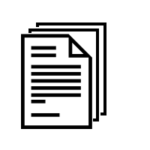
The availability of a complete set of standard operating procedures necessary to govern all the activities and procedures in the test facility is an absolute requirement.
They define how to carry out protocol specificities. Documents should be in chronological order listing different steps in the accomplishment of an activity. There must be a clear mention of responsibilities. SOPs must remain user-friendly. Major consideration should be given to the degree of details incorporated in them. Some of the key SOPs which need to be addressed include
- Samples handling and accountability,
- Receipt of materials, identification of materials, storage condition, method of sampling of test and control articles.
- Recordkeeping, reporting, storage, and retrieval of data.
- Operating technical audit personnel in conducting and reporting GLP audits, inspection reports, and reviews.
- Routine inspection of cleaning, maintenance, testing, and calibration of equipment.
- Handling of Out of Specification (the 00S) results.
- Calibration management.
- Validation of analytical methods.
- Change control procedure.
- Health and safety protection.
- Animal room preparation and animal care.
- Storage, maintenance, and traceability of microbial cultures.
- Storage, use of reference standards, and Reagents.
- Laboratory waste handling.
There must be an SOP in the Laboratory for glassware cleaning, and it should be based on glassware washing efficiency both related to chemical labs and micro labs sensitive items like cells for photometry readings. There Must have cleaning procedures that demonstrate adequate cleaning.
All GLP documentation used should be reviewed and authored prior to use. If software or processes are used, they should be validated and appropriate measures should be taken to ensure control over passwords. Documents should be reviewed periodically and revised whenever needed to ensure continuing suitability.
Invalid or superseded documents must be promptly removed to assured against unintended use. Changes to documents should be reviewed and approved by the same function that performed the original review. Procedures should be established to describe how changes in documents in computerized Systems can be made and controlled.
Additionally, clear-cut procedures must be evolved for the storage, distribution, retrieval, and destruction of documents. Provision must be made to retain raw data, SOPs, documents, and final reports for a predetermined period. There should be archives for orderly storage and expeditious retrieval. Additionally, Conditions of storage should minimize to any damage. Persons responsible for archiving must be identified, and only authorized persons must enter the archives.
Raw data should be recorded on duly controlled raw data sheets or repaginated authorized logbooks. It should be verified independently by another competent person. The raw data, including the automated instrument printouts, should be immediately signed and dated by the QC officer who Performing the test. The data stored on temporary storage media (e.g., thermal paper) should be transferred to robust storage media ( e.g. Photocopy or scan of the printout) and duly authorized, establishing traceability to the original raw data. Data should be recorded wherever possible so as to facilitate trending.
Tests performed must be recorded, and the records should include at least the following data:
- Name of the material and Batch no. where applicable dosage from.
- Reference to the relevant specifications and test procedures
- Test results, including any observations and fair calculations, and reference to any Certificates Analysis
- Date of testing.
- Must have the Initials of the person that performed the test.
- Initials of the person who verified the testing and the calculations where appropriate.
- A clear statement of the status decision (release or reject etc.) and the dated signature of the designated Facility Manager or Responsible Person.
6. Calibration
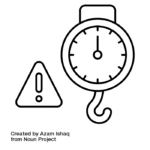
All test and measuring equipment are likely to influence the test results directly or indirectly and be subject to calibration.
The frequency of calibration depends on the instrument, the recommendation from the manufacturer, laboratory experience, and the extent of use. It’s important to have clear procedures for calibration and to document them properly. After calibration, the test report should include a statement on the status of the instrument.
In case of non-compliance, the report must indicate corrective and preventive action. All the test instruments and equipment must have a unique identification number that should be linked to raw analytical data, calibration reports, and logbooks for their use.
The calibration certificate/ calibration record/ calibration report should carry a unique identification number, name, and the address of the agency, if the outside expert is involved, in addition to the identification and description of a test procedure, including traceability to primary standards if used.
The certificate should also indicate the calibration results and the due date for the next calibration. There shall be calibration tags on instruments. Wren, an instrument for calibration, has been adjusted or replaced. The calibration results before and after repair if available, should be reported.
Reference materials used must be characterized, certified, purchased From prominent sources, and attributable to national and international measures. When an instrument is found “Out of Calibration”, it should be conspicuously labeled as such so that its use for testing is prevented.
The test results between non-compliant calibration results and List successful calibration should be reviewed to confirm the correctness of the test result reported, and appropriate action should be taken used on the outcome of the investigation. in case of frequent failures, the frequency of calibration and preventive maintenance should be reviewed, and if necessary
7. Out of Specifications (OOS)
Out of Specification (OOS), results are those results that are generated during testing. These results either do not comply with the relevant specification or standards or with the defined acceptance criteria, if at any time during the process of study or testing, the result is obtained that is out of specification is considered “atypical”, for example; during stability testing a defined procedure should be followed to identify and investigate the result and find the course of action.
The objective of the procedure is to ascertain if the OOS result or atypical result is valid and if the result is valid to determine its probable cause and impact. The OOS or atypical results can arise from causes that can be categorized.
- Laboratory Error
- Operator error-Non process-related
- Process Related – Manufacturing Process Error
The first stage of the procedure is a laboratory investigation to determine if the OOS is clearly assignable to laboratory error. If so, then the result may be discarded and the test repeated. If the OOS is not clearly due to Laboratory, error the investigation is expanded outside the laboratory testing and can include re-sampling.
The aims of expanded investigation are to identify the probable cause of the OOS or atypical result and to determine the significance of the result when making decisions about the material or product under test. Under certain circumstances, there may be Justification for not following the above procedure during OOS, or an Atypical result is obtained. Examples of such situations include, but are not to limited to:
- Pharmacopeia specifications give specific guidance in tests like; content Uniformity, Dissolution, Sterility Testing, etc.
- Stability Testing, where prediction from trend analysis indicates that the result is valid.
- OOS is supported by results for other tests like low assay with the high result for impurified content.
- Investigation of OOS for starting material, raw material, or intermediate materials, where justified, be restricted to a consideration of the suitability of the material for processing.
In circumstances where the SOP is not followed, Justification must be documented and approved by the Head of the department.
8. Validation of Analytical methods:
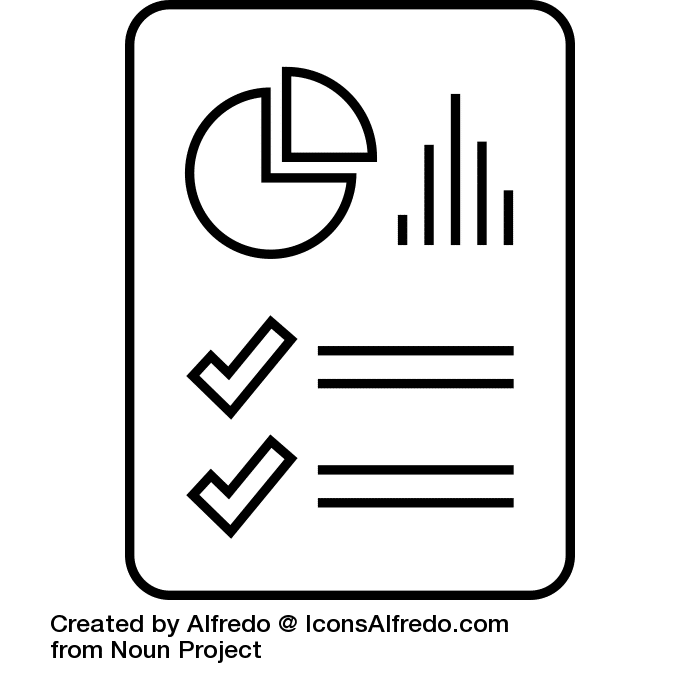
All analytical methods, particularly non-standard and in-house test methods, must be validated by a laid down procedure. All analytical equipment must be appropriately qualified before method validation.
To ensure Good Laboratory Practice, The degree of validation should reflect the purpose of the analysis and the type of product being tested. For example, there should be an increasing degree between packaging materials, raw materials, intermediates, and finished products, clinical trial materials. The validation methodology must clearly be documented and should include:
- Selectivity and specificity
- Range
- Linearity and range
- Robustness
- Bias
- Precision
- Limit of detection
- Limit of quantification
A record must be maintained of any modification of the validated method and should include the reason for modification and appropriate data must be verified to test that the results are as accurate and reliable as the established method.
The suitability of all methods should be verified under actual conditions of use documented. In addition, it would also be useful to perform an inter laboratory comparison of results periodically.
9. Change control
All changes in equipment, test environment, test method, services, systems, or location that may affect reproducibility, accuracy, or standards must be formally requested, documented, and accepted. The impact of the change should be classified, and the change control procedure should be there to ensure that sufficient supporting data are generated. It is effective to determine that change does not affect the result or the in-house or registered specifications.
Related Post: Good Documentation Practice
10. Laboratory Reagents and Reference Standard
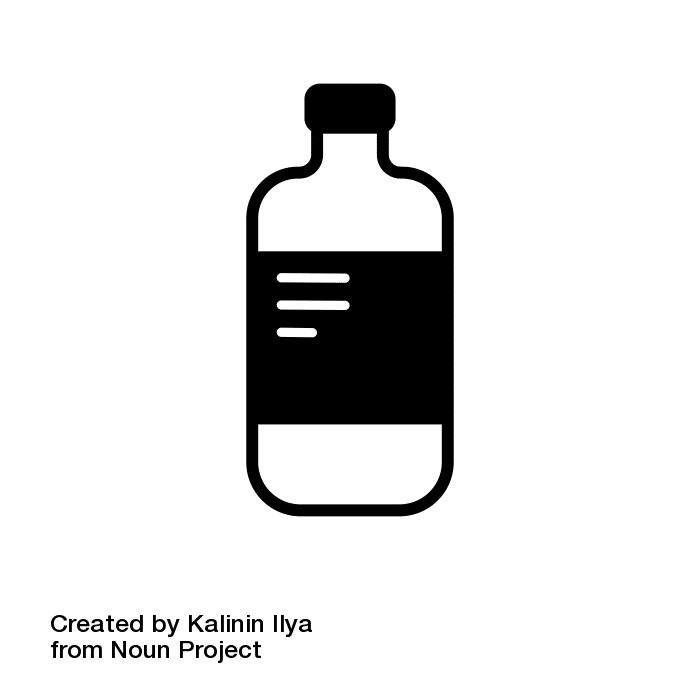
There must be written procedures in place for the handling of reagents and preparation of standard solutions. A primary standard is one that has been shown by an extensive set of analytical tests to be authentic material of established quality.
This standard can be obtained from recognized sources such as USP, BP, etc. Alternatively, it can be prepared through independent synthesis or further purification of existing production material. An “in-house primary standard” is a well-characterized material prepared by the manufacturer from a representative lot, intended for physicochemical testing of subsequent lots, and used as a reference against which in-house reference material is calibrated. A “secondary standard” is a substance of established quality that has been compared to a primary reference standard, and is used as a reference standard for routine laboratory analysis.
When laboratory reagents are received, their dates should be noted, and a “use by” date must be assigned. Alternatively, a short date of one year can be assigned initially, which can then be extended based on retesting. If laboratory reagents are intended for long-term use, the date of preparation and the signature of the officer who prepared them should be noted. All reagents should have an expiry date label, and culture media should have specific storage conditions indicated on the label.
In addition, for volumetric solutions, the last date of standardization and the last current factor should be indicated. Reagents and chemicals should be stored by their hazard class and not in alphabetical order. For example, storage should be by segregating into groups of oxidizers, reactive, and corrosives.
11. Safety
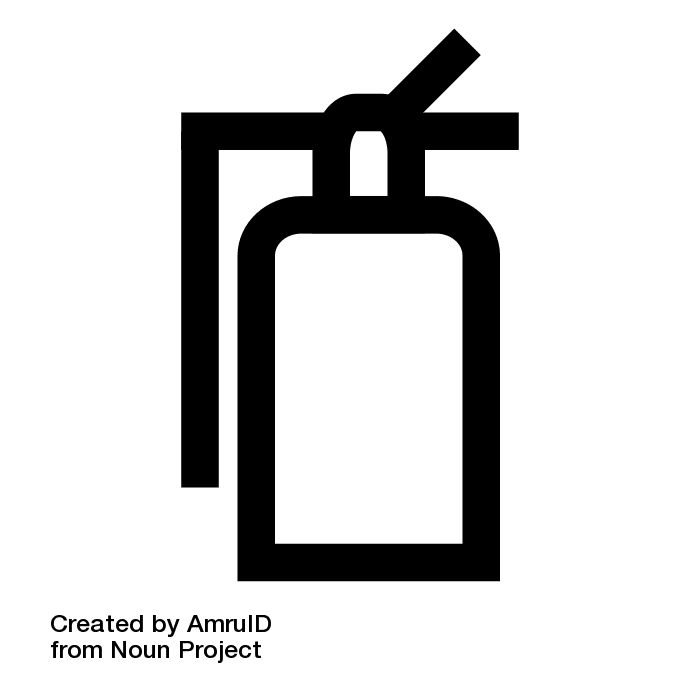
Safety is most important for Good Laboratory Practice. People who work in scientific laboratories are exposed to various types of hazards. This can be said of most workplaces; in some, the hazards are well recognized (those of ordinary fire, for example), and the precautions to be taken are obvious.
The Laboratories must be equipped with adequate extinguishers, personnel protective equipment (PPE), Safety Showers, Eyewash, and First Aid Kits. The design should facilitate the change of street clothes and footwear to specific (PPE) needed by the laboratory personnel.
No employee should work alone in a laboratory or chemical storage area when performing a task that is considered usually hazardous by the laboratory supervisor or safety officer. Clothing worn in the Laboratory should offer protection from splashes and spills, should be easily removable in case of an accident, and ideally should be fire-resistant.
No food, beverage, or cosmetic products should be allowed in the laboratory or chemical storage area at any time. Laboratories using cylinders compressed gas should ensure that they are safe on the wall or placed in a holding cage to prevent tipping.
In summary, careful procedures are necessary for handling the various compressed gases, the cylinders containing the compressed gases, regulators or valves used to control glow, and the piping used to confine gases during flow. Ideally, Cylinders are placed outside of labs, with labeled piping identifying the gas.
Storage of flammable solvents should be kept to a minimum, and cabinets used to hold flammable liquids should be appropriately handled and maintained, with only suitable ingredients being stored together.
12. Training

Test Facility management must provide GLP training for all personnel who involves in Conducting tests and analyses. Training should also be provided to other Personnel whose practice activities could affect the quality of testing.
The record must be maintained of those who are adjudged competent and authorized, including the date of authorization to perform a specific task such as sampling, testing, calibration, operating, typical equipment, issuing of test reports, etc. in addition, the records of their educational and professional undergone, skills, and experience shall also be maintained for Good Laboratory Practice.
13. Quality Audit
To ensure that tests are performed correctly, the testing facility should have a documented Quality Program that is in compliance with these principles of good Laboratory Practice. The Quality program or Self Audit should be carried out by an individual or by individuals who are designated by and directly responsible to the Facility Manager and who are thoroughly familiar with the test procedures. These individuals must not be involved in the conduct of the study/test being assured. The responsibilities of QA/Audit personnel include, but are not limited to, the following functions;
- Maintain a copy of all approved test methods/study plans and SOPs in use in the test facility.
- Verify that the test methods/study plans contain the information required for compliance with these principles of Good Laboratory Practice.
- Conduct audits and inspections to ensure that tests are carried out in compliance with these GLP standards. Inspections can be of three types as specified by the QA SOP:
- Study/Test-based inspection
- Facility-based inspection
- Process-based inspection
- Document and retain records of all inspections.
- Inspect the final reports to confirm that the methods, procedures, and observations an accurately and completely described and that the reported results accurately and completely reflect the raw data of the studies/tests along with the GLP Checklist.
14. Management Review
In order to ensure that a test facility operates in compliance with Good Laboratory Practice principles, it is the responsibility of the management to promptly report inspection results in writing and implement corrective actions if necessary. Ultimately, the management holds the ultimate responsibility for ensuring that the test facility adheres to Good Laboratory Practice principles.
This will involve the GLP implementation of a Quality Assurance or Quality Audit program, which is independent of the actual conduct of qualification, and training facility Manager test/study, and is designed to assure the test facility management of compliance principles of Good Laboratory Practice.
Normally an inspector from a Regulatory Agency will not request to see an actual report of audit as such requests could inhibit auditors when preparing inspection reports. It is sufficient to show that a program of self-audit exists through documented evidence and to show that a procedure for corrective action is also in place.

Naresh Bhakar is the Founder and Author at Pharmaguddu.com, bringing his extensive expertise in the field of pharmaceuticals to readers worldwide. He has experience in Pharma manufacturing and has worked with top Pharmaceuticals. He has rich knowledge and provides valuable insights and data through his articles and content on Pharmaguddu.com. For further inquiries or collaborations, please don’t hesitate to reach out via email at [email protected].

